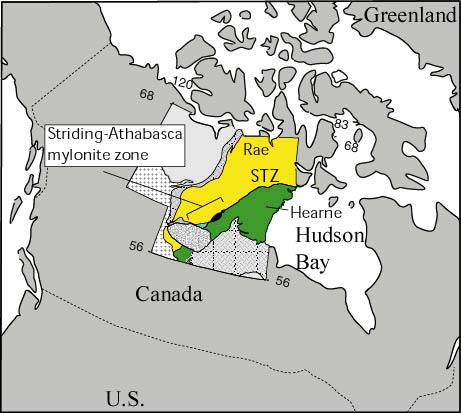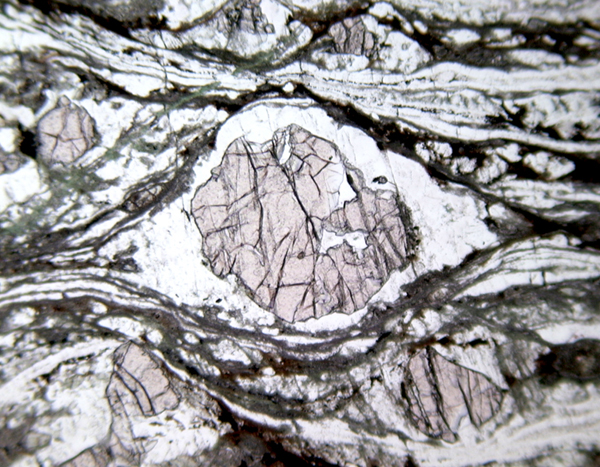



|
One of the most striking features of the western Canadian shield
is the Snowbird tectonic zone (STZ). This NE trending structural
discontinuity is the 2800 km-long boundary between the Rae and
Hearne crustal provinces and is marked by dramatic gravity and
magnetic anomalies and gradients. The Striding-Athabasca (S-A)
mylonite zone is a well-exposed 400 km-long segment in northern
Saskatchewan and the Northwest Territories. This region contains
an extensive domain of the highest pressure rocks known in the
Canadian Shield (~1.5-2.0 GPa) and one of the world's oldest
exposures of eclogite. The S-A mylonite zone is particularly
well exposed in the East Athabasca mylonite triangle (EAmt),
a 40-km-wide, northeast-tapering zone of granulite facies mylonites
in northern Saskatchewan. These extraordinary rocks provide
a unique view of cratonic deep crust that is allowing us to
gain insight into lower crustal and upper mantle magmatic, metamorphic,
and deformational processes.
|
Cora Lake mylonite, East Lake Athabaska, Saskatchewan
